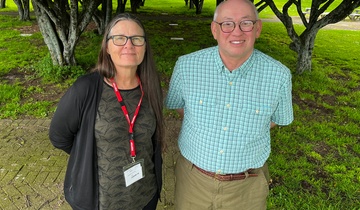Predicting long-term contamination in estuaries
Land-derived sediments and heavy metals are two contaminants threatening the health of New Zealand’s estuaries. NIWA has developed the Urban Stormwater Contaminant (USC) model to predict long-term sediment and heavy metal accumulation under various land-use and management scenarios. The model has recently been applied to the Waitemata and Manukau Harbours to aid planning decisions.
The USC model, developed by NIWA Principal Scientist Malcolm Green, combines information from several underlying models to predict future sediment and heavy metal accumulation in estuaries. The model can look forward 50–100 years, to enable planners to assess risks to estuarine environments from various land-use and management scenarios. It also indicates the path of sediment transport from source to the sea, enabling coastal managers to identify problem areas and assess the effectiveness of different mitigation measures.
NIWA has applied the model to identify habitats at risk and assess the efficacy of stormwater treatment and contaminant source control measures in the central Waitemata and southeastern Manukau Harbours. This work was commissioned by the Auckland Regional Council.
Dr Green was recently awarded a Kudos Award for Environmental Science in recognition of his leading role in applying science to issues threatening our coasts.
More information on the Waitemata and Manukau Harbour project
More information on the USC model
2009 Kudos Award winners, including video of Mal Green talking about his work.







